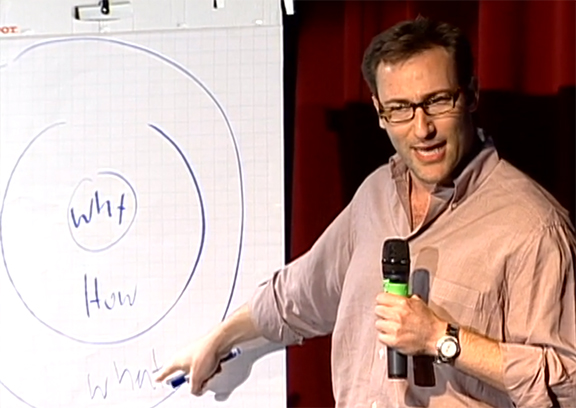![]() It seems self-evident, but is so often forgotten. And, the larger your organization, the easier it is to forget… Organizations don’t change; change occurs through shifts in the way that people think and behave. Your organization–large or small, public or private, for profit or nonprofit–succeeds, or fails, through the people inside of it and their interactions with both one another and with those you intend to serve. This is why writing your change story is fundamentally no different for your organization than it would be for a personal change. Depending on the nature of your change and of your organization, you may need the press releases, the media announcements, the calls with investors. You do need your organization’s change story. It is the story of people changing. It is a personal story for everyone in the organization.
It seems self-evident, but is so often forgotten. And, the larger your organization, the easier it is to forget… Organizations don’t change; change occurs through shifts in the way that people think and behave. Your organization–large or small, public or private, for profit or nonprofit–succeeds, or fails, through the people inside of it and their interactions with both one another and with those you intend to serve. This is why writing your change story is fundamentally no different for your organization than it would be for a personal change. Depending on the nature of your change and of your organization, you may need the press releases, the media announcements, the calls with investors. You do need your organization’s change story. It is the story of people changing. It is a personal story for everyone in the organization.
Not unlike last week’s post (Telling Your Personal Change Story), the first person you need to tell your organization’s change story to is yourself. Quite simply, if you don’t feel it and believe it, neither will anyone else. If you are not going to take the change to heart, neither will anyone else. If you believe “they have to change,” or “the organization has to change,” but you don’t, you–and your change–will fail. If this is a really big change for the organization, it means it is a big change for you as well.
Whether you are the person who is ultimately responsible for the change, have a position of authority elsewhere in the organization, or are someone with informal influence, you next need to tell the story to those who are in a position to drive the story throughout the organization. This will include, but should not be limited to, your direct reports. It should also include others who are highly influential even though they may not be part of the formal hierarchy.
Each of these people needs to feel and believe the story as fully as you do. They need to make it their own, and to tell it in their own words. And, they need to keep it whole. All of the guidelines for writing the story (What’s Your Story? Parts 1 and 2) hold equally true in its telling. Let’s take a look at the guidelines as they apply to telling your organization’s change story.
- Start with your “why.” Why the change is important to the organization should be a constant, regardless of who is telling the story. But it is also important to tell why it is important to you. As Simon Sinek tells us, your why is in your heart. With this is mind, don’t try to tell others why it is important to them. Each person needs to determine that for himself or herself.
- Write from the future. Tell the story from the future.
- Identify how you will know when you have arrived at your destination. What are the indicators that tell you that progress is being made, not just in putting things in place, but in actually shifting the thinking and behaviors that need to change? The story identifies indicators at the organizational level; you need to tell people what these indicators mean to them.
- Establish your time frame. The time frame in the story is the time frame. However, it will also be important to tell people (when it is known) what the time frame means for them.
- Create a “sparkline.” Nancy Duarte describes the sparkline as the constant flow in the story between “what is” and “what could be.” The story has a sparkline, and it is there for a purpose. Use it. The sparkline helps people let go of the current state, and find hope in the future.
- Determine who the participants in your story will be, and their roles. You may not know who will elect to make the journey, and who will opt out. You may not know the job titles, or the names, of those who will complete the journey. When you know these things, they should be addressed. In the meantime, you do know the attributes of those who will succeed in the future state. Be clear in articulating them as part of the story. For example, Today we celebrate individual achievement. As we move into the future, our focus is shifting to acknowledge how much we need every person to achieve, and how much we are dependent on one another. This time next year, the individual who positions himself or herself as the star will be the outlier. Those teams that are strong contributors to our success are the ones we will be acknowledging.
- Honor the past. There is an organizational past to be honored. And, there is a personal past, both for you, and for those to whom you are telling the story.
- Respect and believe in yourself. As you tell the story, if you do not respect and believe in yourself, those who are listening won’t respect and believe in you.
During change people need to hear what it means to the organization. They may need the data, the number of projects or initiatives, the revenue projections, and all of those things that are a part of “the rationale” for initiating such a major initiative. The “big announcement,” whatever form it may take, will be enough to excite some (or even many) to begin the change journey.
But if the journey is long, if it is difficult, they need more. They need a consistent story across the organization, but not the same story. They need to know what the journey means to them, and what is required for them to succeed in the future that your organization is creating. They need to know that you believe in that future, not just in your head, but in your heart as well. They need to hear the story and make it their own.


